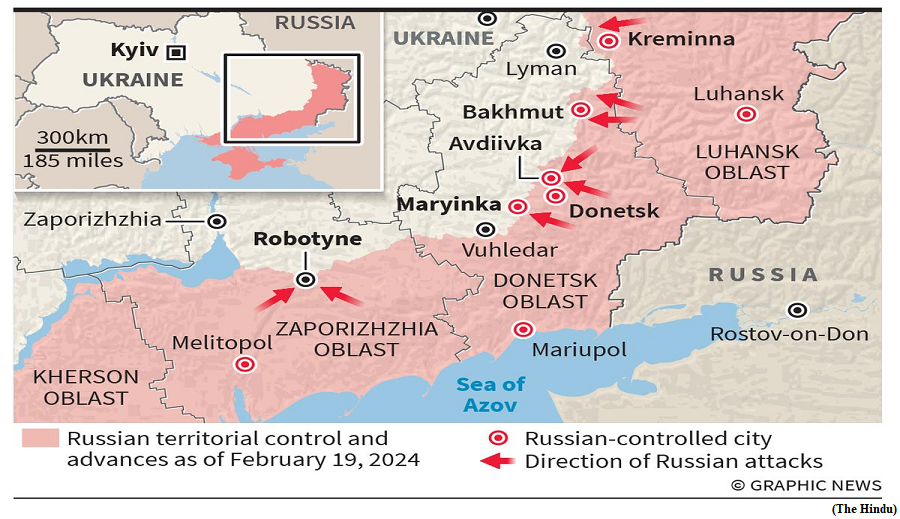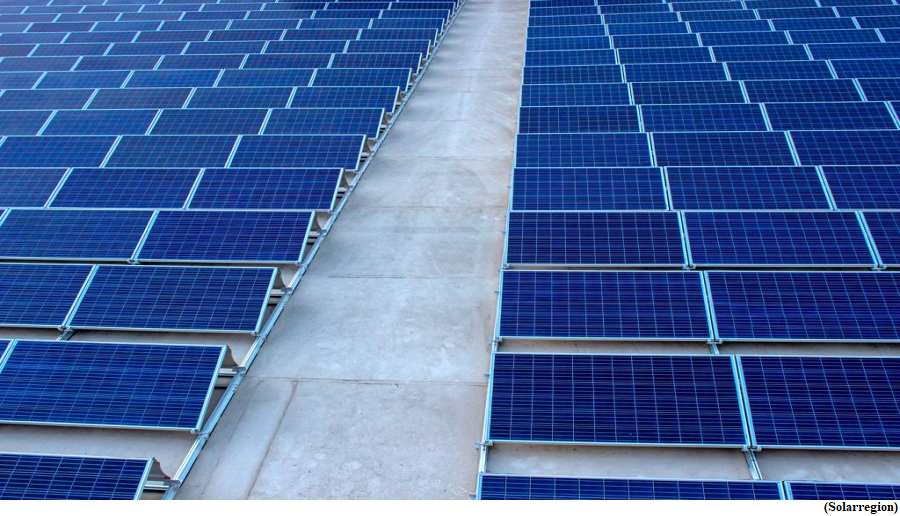Is the Ukraine war changing world order? (GS Paper 2, International Relation)

Why in news?
- Russia’s war in Ukraine has entered its third year. Starting from February 24, 2022, it has turned out to be the largest land war in Europe since the end of the Second World War.
- The war has pushed Russia to turn towards Asia and the Global South in general, while the West continues to support Ukraine in its bid to push back and weaken Russia. A vast majority of countries, including India, remain neutral as the violence continues.
Strategic miscalculation:
- There’s now a consensus among defence experts that President Vladimir Putin made a grave strategic miscalculation when he ordered the invasion of Europe’s second largest country (after Russia), also a close ally of NATO, with less than 2,00,000 troops.
- He probably expected a quick victory, like he did in Georgia in 2008 and Crimea in 2014. But as the Russian war machine got stuck in Ukraine, the West moved in with military assistance, training and international mercenaries.
- After his troops were forced to pull back from Kharkiv in 2022, he immediately ordered a partial mobilisation. Since then, the focus of Russia’s military campaign shifted from all out offence to strengthening the lines of defence with limited offensive battles.
- When Ukraine was preparing for a major counteroffensive, Russia kept thousands of Ukrainian troops engaged at Bakhmut in Donetsk, while at the same time building defence fortifications along the 1,000-km long frontline. Last May, the Russians took Bakhmut.
Where does the war stand now?
- Eight months after Ukraine’s counteroffensive began, it’s now evident that the campaign failed, as admitted by Gen. Valerii Zaluzhnyi, the commander of Ukrainian forces.
- He had called for a mass mobilisation, suggesting that Ukraine was facing acute shortage of fighters on the frontline. They lost many of their West-supplied weapons in the counteroffensive and are waiting for fresh supplies, but aid from the U.S. is stuck in Congress amid Republican opposition.
- On the other side, the Russians are on the offensive. In December, Russia claimed its first victory since the fall of Bakhmut when it captured Maryinka, in Donetsk.
- Earlier, Ukraine was forced to abandon Avdiivka, a strategically important town in Donetsk, after months-long fighting and suffering huge losses.
- The Russians are now advancing westward in Donetsk and piling up pressure on Ukrainian forces in Krynky, Kherson, in the south.
What is the West’s strategy?
- The West had taken a two-fold approach towards Ukraine. One was to provide economic and military assistance to Kyiv to keep the fight against Russia going on; and the second leg was to weaken Russia’s economy and war machine through sanctions.
- With Ukraine’s failed counteroffensive and a changing political climate in US with the prospect of a second Trump presidency looming, the first pillar of this policy faces uncertainty, if not absolute peril.
- The second pillar, sanctions, has hurt Russia badly. The sanctions have deprived Russia of over $430 billion in revenue it would otherwise have gained since the war began.
How have the sanctions affected Russia?
- Russia has found several ways to work around sanctions and keep its economy going. When Europe cut energy sales, Russia offered discounted crude oil to big growing economies such as China, India and Brazil. It set up shell companies and private corporations operating in its neighbourhood (say Armenia or Turkey) to import dual use technologies which were re-exported to Russia to be used in defence production.
- China, the world’s second largest economy, ramped up its financial and trade ties with Russia, including the export of dual use technologies.
- Russia moved away from the dollar to other currencies, mainly the Chinese yuan, for trade, and boosted defence and public spending at home (its defence budget was raised by nearly 70% this year).
- It also strengthened ties with Iran and North Korea, which were also reeling under American sanctions, and imported weapons from them, ranging from drones to cruise missiles and ammunition.
- Two years after the war started, despite sanctions, both Russia’s energy industry and its military industrial complex remain vibrant. Russia earned $15.6 billion from its oil exports alone in January, up from $11.8 billion last summer.
- The Russian Defence Ministry claims that it manufactured 1,530 tanks and 2,518 armoured vehicles in 2023.
What does it mean for the world?
- The Western strategy of empowering Ukraine through aid and weakening Russia through sanctions doesn’t seem to have worked.
- The war has also exposed the limits of Western power in a changing world for sanctions to be effective, the trans-Atlantic alliance now needs the support of other major economies such as China and India.
- While Russia has constantly found ways to work around sanctions, it has also suffered huge casualties and will have to fight the long term effects of the sanctions.
- If there is one great power that stays relatively unscathed by this chaos, it is China. When China looks at the conflict, it sees both the West and Russia stuck in Ukraine, forcing the latter to pivot to Asia, redrawing the global balance of power.
SECI unveils India's largest solar-battery project
(GS Paper 3, Science and Technology)
Why in news?
- The Solar Energy Corporation of India Limited (SECI), under the aegis of the Ministry of New and Renewable Energy, has successfully commissioned India's largest Battery Energy Storage System (BESS), which stores energy using solar energy.

Details:
- The 40 megawatts (MW) / 120MWh BESS with a solar photovoltaic (PV) plant which has an installed capacity of 152.325 megawatt hour (MWh) and dispatchable capacity of 100MW AC (155.02 MW peak DC) is located in Rajnandgaon, Chhattisgarh.
- The energy would be purchased by the state of Chhattisgarh, thus contributing to meeting the peak energy demand of the state using green electrons and also towards its renewable purchase obligations.
Key Highlights:
- The project using solar panels and battery storage represents a monumental leap forward in generation and use of renewable energy.
- The project utilizes battery storage for storing solar energy when the sun is shining and using it later during hours of peak demand in the evening, for meeting the electricity demand in the state.
- The project has deployed bifacial modules, which reflect the light from the ground, thus generating more electricity than monofacial modules, hence setting a new standard for large-scale renewable energy projects.
Use of wasteland:
- A unique aspect of this project is its strategic use of previously unused land.
- Through a tripartite land-use permission agreement among the Energy Department of the Government of Chhattisgarh, Chhattisgarh State Power Distribution Company Limited (CSPDCL), and SECI, 451 acres of waste land across 9 villages in Tehsil Dongargarh and Dongargaon, District Rajnandgaon, Chhattisgarh, have been repurposed.
Prospects:
- The project ensures overall power stability and reliability by ensuring an efficient evacuation of power through a 132 kilo-volt (kV) double-circuit double-string transmission line to Chhattisgarh State Power Transmission Company Limited’s (CSPTCL) 220/132 kilovolt (kV) Thelkadih substation, facilitating seamless integration into the existing power grid.
- This project is estimated to save tonnes of carbon dioxide emissions annually.
- SECI's long-term power purchase agreement with the state electricity distribution company (CSPDCL) underscores the economic viability of the project and support for such renewable energy endeavours.
Funding:
- The project has been constructed with funding from the World Bank and Clean Technology Fund under Innovation in Solar Power & Hybrid Technologies Projectas well as leveraged financing from domestic lending agencies.
- This further highlights the collaborative efforts to drive sustainable financial arrangements, making the project commercially attractive and viable.
Way Forward:
- This project is expected to have a far-reaching positive impact on the renewable energy landscape and in promoting responsible utilization of land resources in India and globally.



